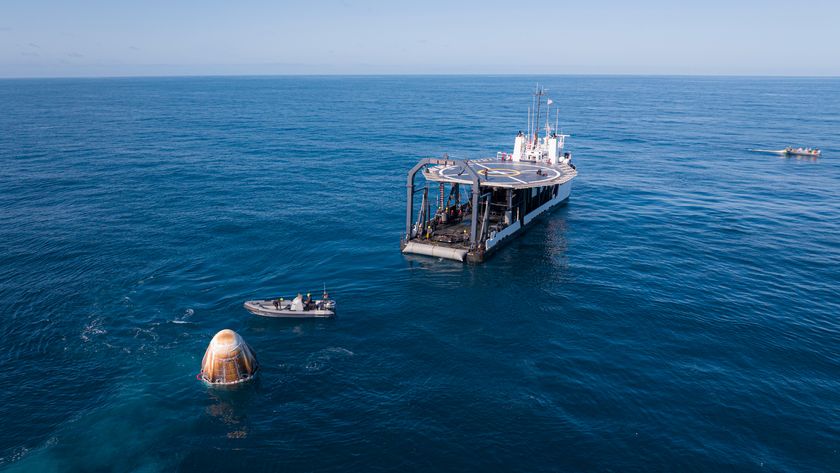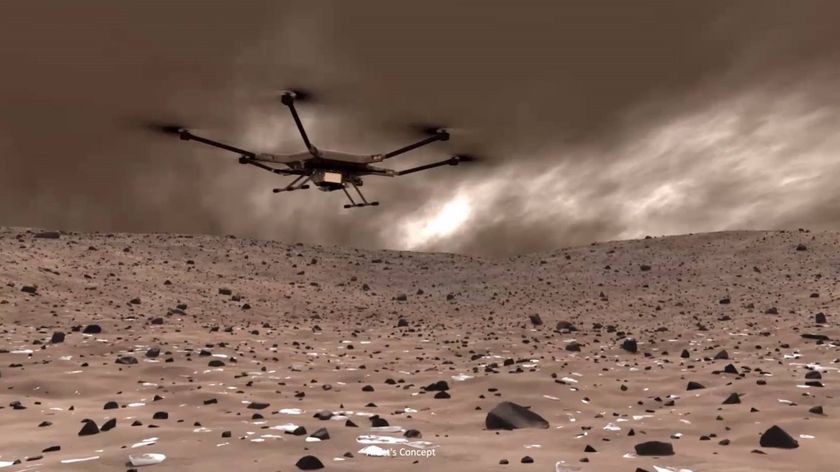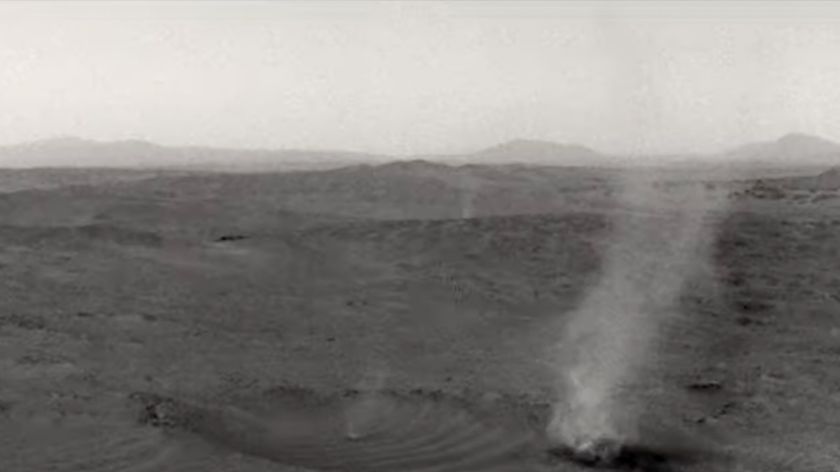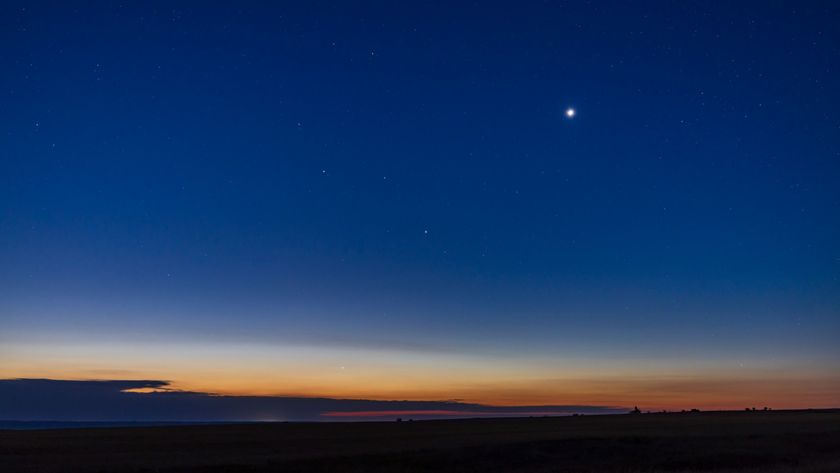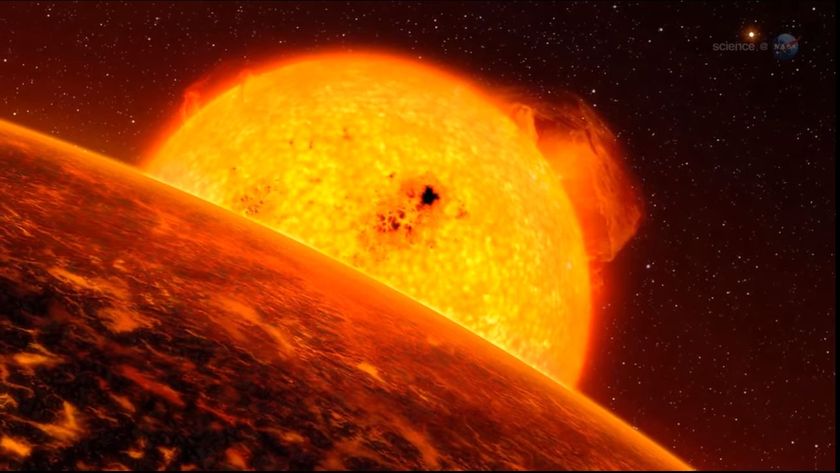Photos: The Search for Water on Mars
Mystery Lines on Mars Crater Might Reveal Water
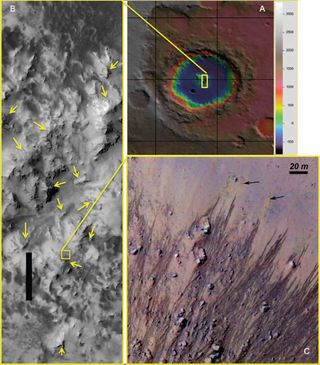
This composite image shows odd lines on slopes of Mars' Horowitz Crater, which scientists say suggest the presence of liquid salt water. These images show the central structure of Horowitz Crater, including central peaks and pits. The arrows mark locations of the odd slope features.
Recurring Slope Lines on Horowitz Crater
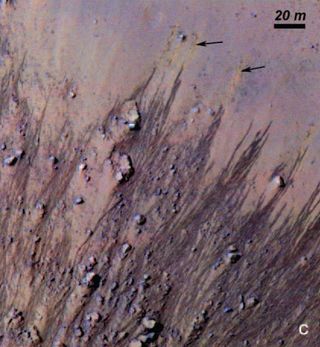
These slopes carved in Horowitz crater on Mars suggest the Red Planet might current host liquid water. Colors have been strongly enhanced to show the subtle differences, including light orange streaks (black arrows) in the upper right that may mark faded lines.
Impact Crater in Mars' Newton Basin
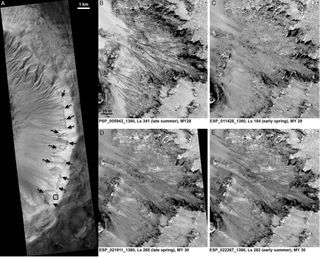
An impact crater in Mars' Newton basin shows lines that appear to have been carved by salt water. Four side panels show these lines in the late summer on Mars (B), then faded by the next very early spring (C), then gradually darkening and reforming in the spring (D) and summer (E).
Color-Coded Clues to Composition Superimposed on Martian Seasonal-Flow Image
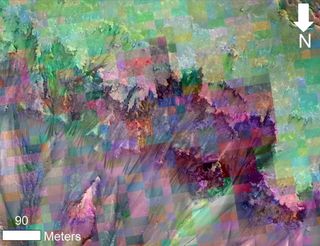
This image combines a photograph of seasonal dark flows on a Martian slope with a grid of colors based on data collected by a mineral-mapping spectrometer observing the same area. Image released Feb. 10, 2014. [Read the Full Story Here]
Gully Gazing: Scientists Search for Flowing Water on Mars
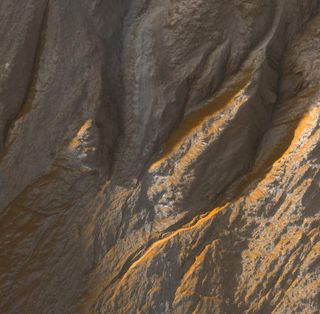
Crater edge in Terra Sirenum has been imaged by the High Resolution Imaging Science Experiment (HiRISE) camera on NASA's Mars Reconnaissance Orbiter. Gully watching thanks to repeat sweeps over the same landscape by orbiting spacecraft could catch gullies in action, if they are active today.
Mars Once Shuffled Its Icy Poles
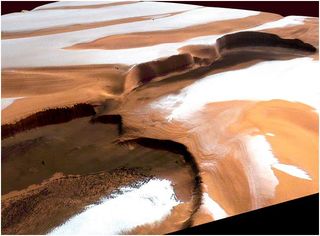
Pockets of water ice on the southern pole of Mars, such as these, have been stopped from their once-routine migration by a cap of dry ice, or frozen carbon dioxide. Planetary scientists think the migrations was fueled by an eccentric wobble in Mars'tilt.
Hidden Glaciers Are Common on Mars
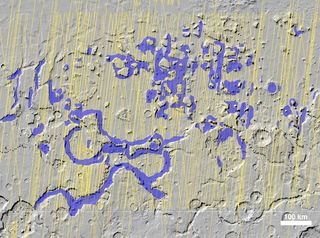
The Shallow Radar instrument on NASA's Mars Reconnaissance Orbiter has detected widespread deposits of glacial ice in the mid-latitudes of Mars. This map of a region known as Deuteronilus Mensae, in the northern hemisphere, shows locations of the detected ice deposits in blue.
Get the Space.com Newsletter
Breaking space news, the latest updates on rocket launches, skywatching events and more!
McLaughlin Crater on Mars (Annotated)
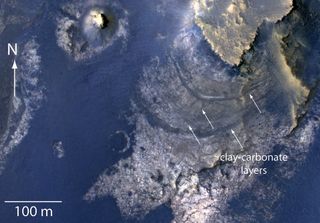
An annotated look at the huge McLaughlin Crater on Mars, showing locations of minerals and clays created by water in the ancient past. The region may have once been a groundwater lake billions of years ago. Image released Jan. 20, 2013.
NASA Gives Frozen Mars Lander Last Chance to Phone Home
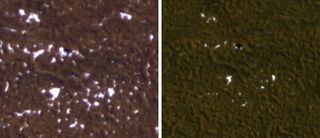
Stages in the seasonal disappearance of surface ice from the ground around the Phoenix Mars Lander are visible in these images taken on Feb. 8, 2010, (left) and Feb. 25, 2010, during springtime on northern Mars, by NASA's Mars Reconnaissance Orbiter.
Mars Craters Tell Story of Water and Ice
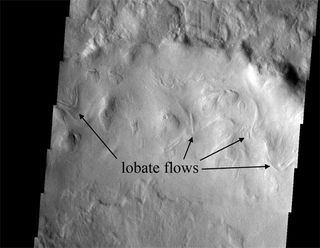
Tongue-shaped features called lobate flows were seen on the wall of a 37-mile (60-km) diameter crater on the Martian surface. (Image taken with the Mars Oddysey THEMIS VIS camera.)
Join our Space Forums to keep talking space on the latest missions, night sky and more! And if you have a news tip, correction or comment, let us know at: community@space.com.

Space.com is the premier source of space exploration, innovation and astronomy news, chronicling (and celebrating) humanity's ongoing expansion across the final frontier. Originally founded in 1999, Space.com is, and always has been, the passion of writers and editors who are space fans and also trained journalists. Our current news team consists of Editor-in-Chief Tariq Malik; Editor Hanneke Weitering, Senior Space Writer Mike Wall; Senior Writer Meghan Bartels; Senior Writer Chelsea Gohd, Senior Writer Tereza Pultarova and Staff Writer Alexander Cox, focusing on e-commerce. Senior Producer Steve Spaleta oversees our space videos, with Diana Whitcroft as our Social Media Editor.



